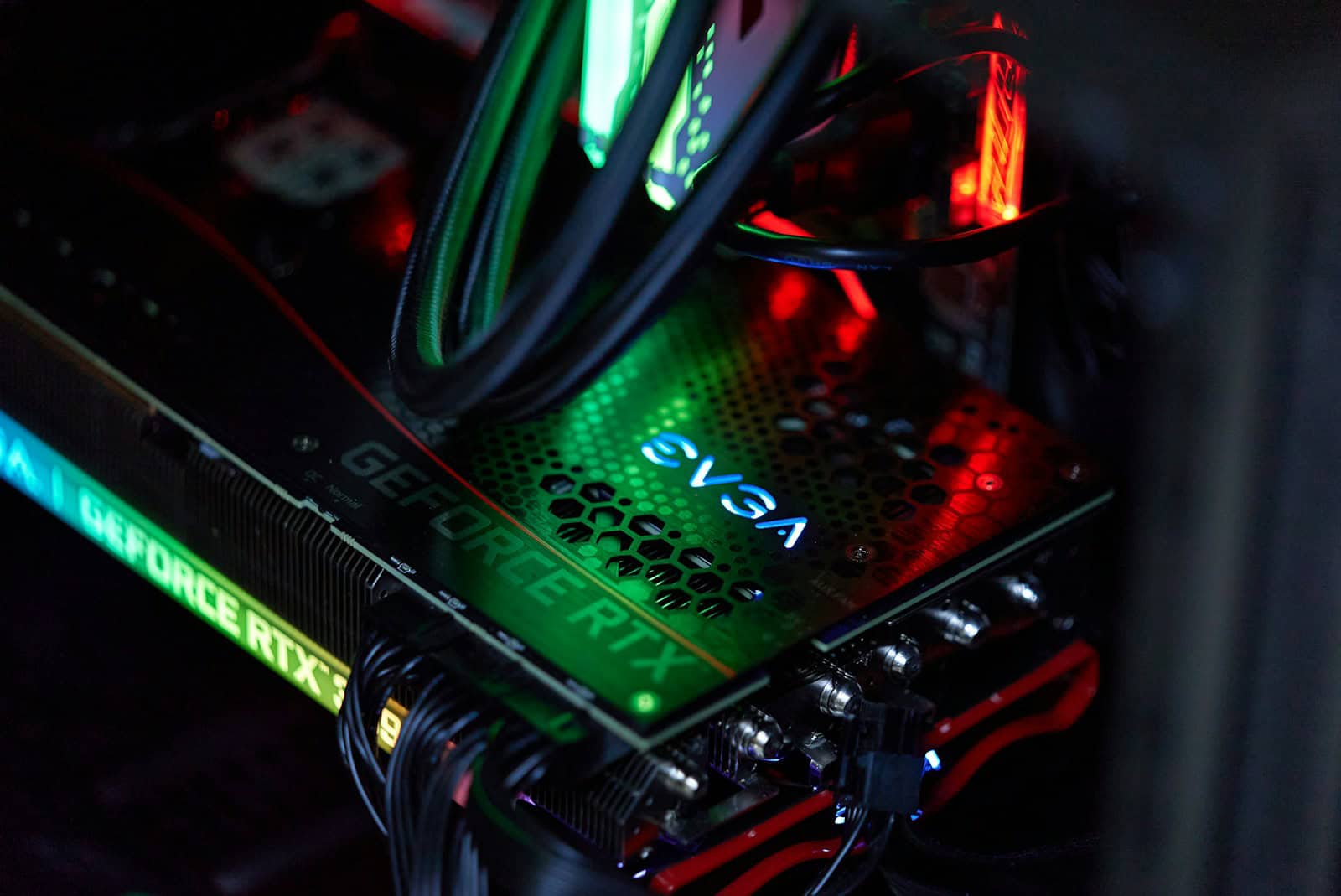EVGA, a prominent player in the graphics card industry, made a significant announcement that shook the technology community. The company declared its departure from producing graphics cards, a move that was particularly unexpected because EVGA was a major supplier for Nvidia, a leading chip manufacturer. This decision marks a turning point for EVGA, as it steps away from a segment that had been a fundamental part of its business for years.
Why EVGA Stopped Their Video Card Line
EVGA, a well-respected name in the PC hardware world, shocked enthusiasts when it announced its sudden departure from the graphics card market in 2022. This move had serious implications for the industry and left many wondering what prompted this decision. Here’s a breakdown of the primary reasons behind EVGA’s exit:
Strained Relationship with NVIDIA
EVGA heavily relied on NVIDIA as the supplier of graphics processing units (GPUs), the core component of graphics cards. Over time, EVGA expressed dissatisfaction with aspects of their partnership:
- Lack of Communication: EVGA felt that important details about upcoming GPU releases, including pricing, were often withheld until the last minute. This hindered their ability to plan launches and establish competitive pricing strategies.
- Undercut by NVIDIA: EVGA claimed that some of NVIDIA’s own Founders Edition cards were priced lower than their custom-designed products. This created a direct conflict of interest and hurt EVGA’s profit margins.
Declining Profitability
The graphics card market became increasingly challenging for manufacturers towards the end of EVGA’s involvement:
- Post-Crypto Mining Slump: The cryptocurrency mining boom had fueled inflated demand and prices for graphics cards. As this boom subsided, the market became flooded with used mining GPUs, driving down prices and squeezing profit margins for manufacturers like EVGA.
- Supply Chain Constraints: The global supply chain issues of recent years hampered the production and distribution of graphics cards, leading to delays and inflated component costs.

Shifting Focus
While graphics cards represented the bulk of EVGA’s business, it recognized other less volatile areas for opportunity:
- Other PC Components: EVGA already produced well-received power supplies, motherboards, and peripherals. The company decided to refocus its resources on these areas where profit margins were more stable.
| Factor | Explanation |
|---|---|
| Troubled NVIDIA Partnership | EVGA struggled with limited communication and undercutting from its GPU supplier |
| Market Changes | Fluctuating demand and supply side issues made the graphics card business less profitable |
| Opportunity Elsewhere | EVGA found greater potential in power supplies and other PC components |
The culmination of these factors led to EVGA’s eventual and abrupt decision to discontinue its graphics card line. This move demonstrates the challenging nature of the hardware industry and the importance of adaptability for businesses in this dynamic field.
Understanding EVGA’s Exit from the GPU Market
| Reason | Description |
|---|---|
| Disagreements with Nvidia | EVGA publicly cited feeling disrespected by Nvidia, their graphics card chip supplier. This included issues like: * Limited communication regarding pricing and product launches * Feeling pressured to prioritize sales over quality control |
| Financial Strain | The graphics card market can be volatile. EVGA claimed that: * Profit margins on graphics cards were lower compared to other products they make. * The unpredictable nature of the market, including crypto mining booms and busts, made it difficult to plan. |
| Operational Challenges | EVGA’s approach to manufacturing may have contributed: * They relied on other companies for circuit boards and coolers, potentially reducing profit margins. * Launching and supporting new Nvidia graphics cards could be resource-intensive. |
The reasons behind this departure underline a deep-seated disagreement with Nvidia, coupled with business and operational challenges. EVGA cited unfavorable conditions and conflicts that made the continuation of this partnership unsustainable. This shift in EVGA’s strategy prompts discussions on the impact of such a change on consumers and the graphics card market at large.
Key Takeaways
- EVGA discontinued its graphics card production, signaling a major shift in its business strategy.
- Disagreements with Nvidia and various operational difficulties influenced EVGA’s decision.
- EVGA’s exit from the graphics card market alters the landscape for consumers and competitors.
The Strategic Shift in EVGA’s Business Model
EVGA made a bold move in exiting the graphics card market, reshaping its business model after a long-standing partnership with Nvidia.
Reassessment of Partnerships and Market Dynamics
In a rapidly evolving tech industry, EVGA reconsidered its alliance with Nvidia. This scrutiny of market trends and the dynamics of existing partnerships led EVGA to step away from the GPU space.
Financial Considerations Behind Exiting the GPU Market
Financial outcomes played a crucial role in EVGA’s decision. With GPUs contributing heavily to revenue, the move signals deeper business priorities, emphasizing profitability and sustainable growth.
Industry Reactions and Community Response
The announcement by EVGA sparked conversations among industry experts and the gaming community. Notable channels like Gamers Nexus and JayzTwoCents shared insights, highlighting the impact of EVGA’s departure.
Exploring New Horizons
Following its exit from the GPU market, EVGA turns its focus to other product lines like motherboards and power supplies. This pivot opens new paths for innovation and market presence.
Implications for Current and Future Product Lines
EVGA’s GPU departure raises questions about the future of its product offerings. The company now directs its engineering prowess to other areas of PC hardware, ensuring loyal customers continue to receive quality products.
Evolution of Customer Support and Services
EVGA intends to maintain robust support for existing graphics card customers. New ventures in hardware will be accompanied by strong warranties and customer services to uphold EVGA’s reputation in the industry.
The Technical and Operational Challenges for EVGA
As EVGA transitioned away from producing graphics cards, they encountered significant hurdles that contributed to their decision. These ranged from manufacturing difficulties to market volatility, each posing its own set of challenges.
Manufacturing and Engineering Constraints
The process of creating graphics cards involves complex engineering and manufacturing steps. EVGA faced substantial costs in research and design. The math behind engineering a powerful GPU is intricate, requiring substantial investment in both time and resources. Additionally, they had to consider the manufacturing capacity both in the US and Taiwan to meet their production goals. This became increasingly difficult with constrained margins in a competitive landscape.
Supply Chain and Inventory Management Issues
Management of the supply chain and inventory is critical in the tech industry. During the crypto boom, the sudden surge in demand for GPUs, driven by Ethereum mining, led to a depletion in stock. After the boom, the market faced an oversupply which hurt companies like EVGA. They needed to balance having enough stock to meet demand without being left with excess inventory, which could tie up money and negatively impact margins.
Overcoming the GPU Market Fluctuations
The GPU market experiences rapid and unpredictable fluctuations. Prices and demand can swing wildly based on factors like the crypto market or new product releases from competitors like Nvidia, AMD, or Intel. EVGA’s strategy needed to be flexible enough to navigate these shifts. They also were subject to the dynamics of being an authorization partner with Nvidia, which added another layer of complexity to their business model.
Strategizing Product Development in a Competitive Landscape
In the competitive world of PC components, strategizing product development is key to staying relevant. With Nvidia releasing 40-series GPUs, EVGA needed to decide if they could compete on coolers, pricing, or other features to stand out in the North American market. The pressure to innovate and bring unique products to the market, along with balancing engineering challenges and manufacturing costs, placed a heavy burden on the company. With 80% of their gross revenue depending on the graphics card market, the stakes were extremely high.
Frequently Asked Questions
EVGA’s departure from the graphics card industry has raised several questions among tech enthusiasts and consumers alike. This section provides answers to some of the most common inquiries regarding this significant industry development.
What led to EVGA’s decision to exit the graphics card market?
EVGA cited challenges and disagreements with Nvidia as the main reasons for their withdrawal from making graphics cards. Relationships between the two companies had become strained, leading to the decision.
When did EVGA announce they would stop manufacturing GPUs?
The company made its announcement in the fall of 2022, signaling the end of its production of GPUs.
What are the implications for the GPU market following EVGA’s departure?
EVGA’s exit could lead to reduced competition and choice in the GPU market, potentially affecting prices and innovation.
Has EVGA indicated a possibility of re-entering the graphics card production in the future?
There has been no indication from EVGA that they plan to re-enter the graphics card manufacturing business after their decision to stop.
What product lines will EVGA focus on after ceasing GPU manufacturing?
Post-GPU, EVGA plans to concentrate on their other product lines, which include power supplies, gaming mice, and motherboards.
How does EVGA’s exit from the graphics card market affect consumers and competitors?
Consumers may see fewer options when choosing graphics cards, while competitors could experience changes in market share and dynamics due to EVGA’s departure.







